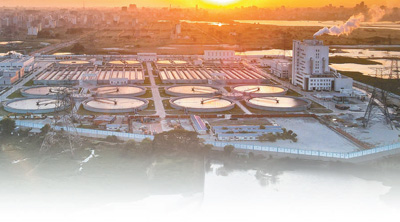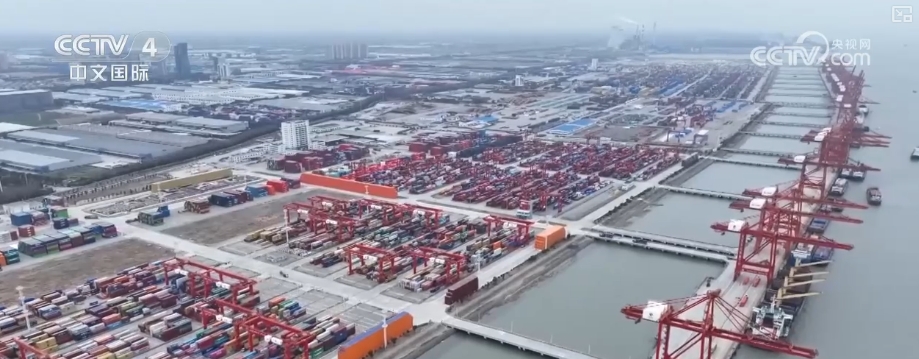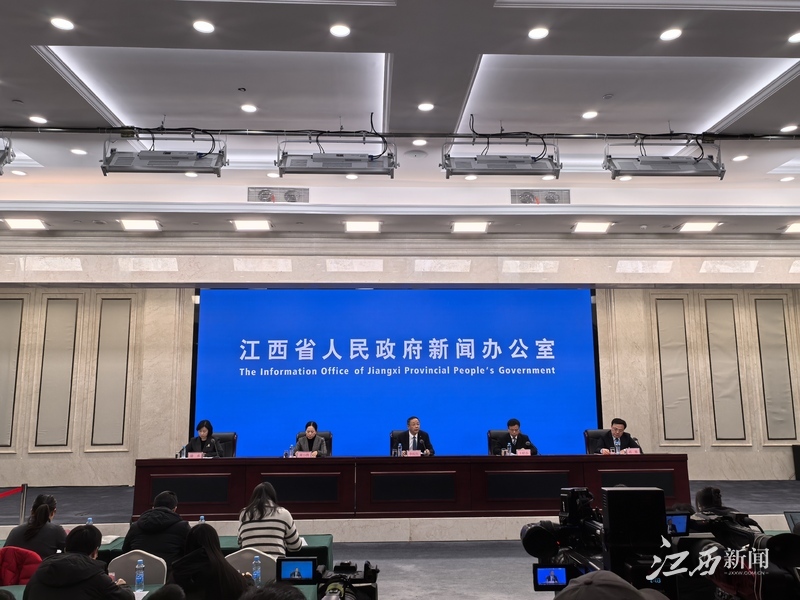Central Asian Countries Accelerate Development Of Renewable Energy (International Perspective)
Central Asian Countries Accelerate Development Of Renewable Energy (International Perspective)
Source: [People's Daily] Photovoltaic power plant project in Kashkadaria Prefecture, Uzbekistan, undertaken by a Chinese company.

A photovoltaic power plant project in Kashkadaria Prefecture, Uzbekistan, undertaken by a Chinese company. Photo by our reporter Li Qiang
On the vast grassland, fans tens of meters high stand, and huge blades slowly rotate... Since the 100-megawatt wind power project in Zanatas, Kazakhstan, was put into production in 2021, with the joint efforts of employees of China and Kazakhstan, green electricity is continuously being transported to thousands of households in southern Kazakhstan, significantly alleviating the local power shortage.
Not only Kazakhstan, but Central Asian countries generally have abundant resources such as wind energy, solar energy, and hydropower, and have significant advantages in developing renewable energy. In recent years, Central Asian countries have actively introduced support policies to accelerate the deployment of renewable energy industries and promote energy transformation and green development. China and Central Asian countries have carried out multiple cooperation projects in related fields to achieve mutual benefit and win-win results.
Great potential for developing renewable energy
A recent report released by the World Bank pointed out that the Central Asian region has huge potential for solar and wind power generation, and expanding the utilization of renewable energy is an important way to diversify the energy structure and improve the security of the energy system. The five Central Asian countries have their own characteristics and advantages in developing renewable energy.
The average annual sunny days in Uzbekistan exceeds 300 days. According to the World Bank estimates, the total amount of solar energy it receives per year is equivalent to about 51 billion tons of oil equivalent. According to data from the International Energy Agency, Tajikistan ranks eighth in the world in terms of hydropower generation potential, at about 527 billion kWh per year. According to the United Nations Development Programme, Kazakhstan's wind power generation potential alone is as high as 920 billion kilowatt-hours per year. Kyrgyzstan has abundant hydropower resources, and more than 80 hydropower stations have been built can supply 94% of the country's electricity. Statistics from Shell's global energy resource database show that Turkmenistan ranks 30th in the world in terms of land wind energy potential, and its wind power development has obvious advantages.
According to the report of the International Renewable Energy Agency, the renewable energy power generation capacity of Central Asian countries continues to increase, and Kazakhstan and Tajikistan have become leaders in the region. Among them, Kazakhstan has the largest increase, with the installed capacity of new energy from 2734 MW in 2014 to 5663 MW in 2023; Tajikistan has installed capacity of renewable energy reaching 5763 MW.
However, the utilization rate of renewable energy in Central Asian countries and their share in electricity supply still have a lot of room for improvement. The Central Asian Regional Economic Cooperation Mechanism report shows that although there are some energy-intensive economies in Central Asia and the potential for developing renewable energy is huge, the average installed capacity of solar and wind energy in the region currently accounts for less than 5% of the developable volume. Specifically, Uzbekistan's photovoltaic power generation accounts for less than 2% of the energy structure, while the actual hydropower development and utilization rates in Tajikistan and Kyrgyzstan are only 4% and 10% respectively.
Tatiana Proskuriyakova, Regional Director of Central Asia at the World Bank, believes that Central Asian countries have all prerequisites to ensure energy security by increasing the use of renewable energy and developing regional electricity trade. Renewable energy demand in the region is expected to grow by more than 30% by 2030, and through coordination and active action, the region is expected to be a "model for the development of renewable energy."
Countries have introduced a number of policy measures
At present, Central Asian countries regard green, low-carbon and sustainable development as important directions for economic and energy reform, and actively respond to climate change challenges by accelerating the deployment of renewable energy. On May 11 this year, the Zelavshan Wind Power Project in Uzbekistan successfully completed a 240-hour reliability operation in the entire venue. As the country's first large-scale wind power project, its total installed capacity reaches 5.21.7 megawatts. After completion, it can provide green electricity to 500,000 households, reducing carbon dioxide emissions by 1.1 million tons per year.
In Kazakhstan, data recently released by the Ministry of Energy shows that the country's renewable energy power generation accounted for 6.43% of the country's total power generation in 2024, a significant increase from 3% in 2020. Kazakhstan has formulated the "Vision of Low-Carbon Development before 2050", planning to promote renewable energy such as biofuels and hydrogen energy and "green and waste-free" technologies, striving to increase the proportion of renewable energy power generation to 15% by 2030, to 50% by 2050, and achieve carbon neutrality by 2060.
Tajikistan has formulated the "Renewable Energy Plan for 2023-2027" to vigorously develop renewable energy such as hydropower, solar energy and wind energy, and plans to attract about 1.6 billion foreign investment in Tajikistan Somoni (1 yuan is approximately 1.32 Tajikistan Somoni) to invest in the plan. In 2019, Uzbekistan passed the "Uzbekistan Transition Strategy to Green Economy from 2019 to 2030", proposing to strengthen the construction of renewable energy power generation projects such as photovoltaics, wind, hydropower, and biogas, and increase the share of renewable energy power generation to more than 25% by 2030. Turkmenistan formulates the "National Strategy for the Development of Renewable Energy by 2030", aiming to further develop renewable energy, ensure energy security, and set greenhouse gas emission reduction targets in key economic fields by 2030.
In the 2030 energy strategy, the Central Asian Regional Economic Cooperation Mechanism pointed out that the energy investment demand in Central Asia is about US$400 billion, while the current investment level is only about 1/4 of the total demand, and there is a large gap. In order to attract more investment into the field of renewable energy, Kazakhstan provides financial subsidies for the construction of new energy projects, covering the preliminary construction of the project, equipment procurement, technology research and development and other links to reduce construction costs and investment risks. Uzbekistan has revised its relevant tax laws to exempt renewable energy power plants with a rate of 0.1 megawatts and exempt property and land tax for 10 years. At the same time, it focuses on attracting private economy to participate and accelerate the promotion of low-carbon technology.
China helps sustainable development in Central Asia
In recent years, with the continuous advancement of the joint construction of the "Belt and Road" initiative, China and Central Asian countries have continued to deepen their cooperation in the field of renewable energy, which not only injects new impetus into the development of both sides, but also makes positive contributions to the optimization of regional energy structure and environmental sustainable development.
China actively participates in the construction of new energy projects in Central Asian countries and provides solid technical and equipment support. In February this year, Shenzhen Energy Group and relevant departments of Kyrgyzstan signed two renewable energy cooperation agreements, including the construction and operation of a 300-megawatt wind farm and a 300-megawatt solar power plant.
The 1 GW photovoltaic project invested by China Energy Construction Overseas Investment Co., Ltd. in Uzbekistan is the first large-scale new energy project invested and constructed by China in Central Asia after the first China-Central Asia Summit in 2023. By the end of 2023, the first phase of the project will be successfully connected to the grid to generate electricity. When Uzbekistan Prime Minister Alipov inspected the project, he highly praised the overall construction and operation status and called it another example of Uzbekistan cooperation.
China also provides new energy technology training and related educational resources to Central Asian countries to help cultivate local professional talents. In Tajikistan, the Luban Workshop, which was jointly built by Tianjin Urban Construction Management Vocational and Technical College and Tajikistan Technical University, was put into use in November 2022. It has teaching areas such as the Green Energy Training Center to provide high-quality training and practical opportunities for local students. In Kazakhstan, the Luban Workshop, jointly constructed by Tianjin Vocational University and East Kazakhstan Technical University, plans to add new energy-related courses to meet the growing demand for new energy talents in the local area...
Madaliyev Umarhong, chief researcher at the Institute of Physics and Technology of the Tajikistan Academy of Sciences, said that China's technical experience in the field of new energy plays an important role in Central Asian countries such as Tajikistan. Former Kyrgyz Prime Minister Zhuomart Ottorbayev believes that China plays an important role in the Central Asian energy system, and Central Asian countries can learn from China's relevant experience in promoting energy transformation to achieve green growth.
(Astana, September 1)
"People's Daily" (17th edition, September 2, 2025)





